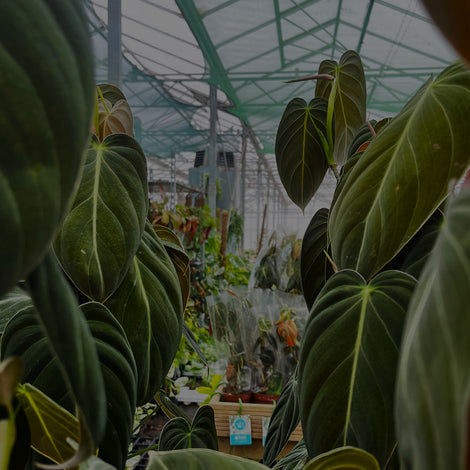Monstera Adansonii Care Guide
The Monstera or ‘swiss cheese plant’ is probably the most popular houseplant variety in the UK. Easy to look after and beautiful to look at, these plants are known for their large, broad leaves that have holes in them.
The Monstera Adansonii, or Monkey Mask, is a slightly larger Monstera variety that can be used as a trailing or climbing tropical houseplant that brings a wonderful display into your home. In this guide we will take you through everything you need to know about growing this spectacular plant.
Monstera Adansonii soil
Your Monstera Adansonii will thrive in most pre mixed soils as long as they are well-draining, and maintain enough moisture to keep the plant watered. Adding orchid bark or perlite to the mix can help with this and will allow more air to circulate in the soil, creating a much more beneficial soil mix. Try to avoid acidic soil as they can damage the root system. Try to keep your soil PH between 5.5 and 7.0. You can check this with a Ph sensor if you are making your own mix or looking at the Ph given on the soils packaging if buying. Our Philodendron & Monstera potting mix provides the ideal mix for your Monstera plant.
How much light does a Monstera Adansonii need?
Like all tropical houseplants, the Monstera Adansonii likes bright, indirect light in order to thrive. Place your plant a few feet away from a bright south or west-facing window. If you cannot place your plant in a location away from direct sunlight make sure to cover your window with a blind or window sticker that can filter the light slightly.
In the winter, or if you are putting your plant in a darker room consider buying a grow light to supplement any lost light.
How to water a Monstera Adansonii
The only area that is slightly tricky when looking after a Monstera is making sure it gets enough water. The Monstera Adansonii is a particularly fussy Monstera when it comes to water, but when you know what you’re doing it is a lot easier to look after than a lot of other plants.
Water your plant regularly to make sure the plant is moist, but not wet. Having a pot with good drainage will help with this. You should expect to water your Monstera about once a week, but don’t get stuck into this routine as the amount you need to water your plant will fluctuate throughout the year. Instead, water your plant when the top few inches of soil have become dry. The best way to test this is to insert your finger into the soil to test how wet it is. When you water your plant do so until the water begins to seep out of the drainage holes in the bottom of the pot.
What is the best temperature to grow a Monstera in?
You would expect a tropical houseplant to require really hot temperatures, but the Monstera is an adaptable plant that can thrive at a lot lower temperatures that it would find in its natural habitat. In your home, keep your plant between 18 and 27°C. Any temperatures below this range will slow or stop the growth of your plant and may cause it to wilt and die. Your plant can survive a small amount of exposure to colder conditions, but try to avoid this if possible.
To regulate your plants temperature, keep it away from cold draughts and radiators and consider buying a soil thermometer to keep a close eye on the temperature.
Does my Monstera Adansonii need a lot of humidity?
The Monstera Adansonii needs a more humid space than most houseplants. Humidity helps to keep the leaves looking glossy and vibrant, but also helps the plant regulate its moisture as it will absorb a lot of it through the leaves and aerial roots.
Mist the leaves of your plant regularly to keep the foliage looking great. You will need to mist your plant every other day to maintain the humidity, so if you want a more hands off approach consider placing the plant on a pebble tray or near a humidifier.
Should I Fertilise my Monstera Adansonii?
The Monstera is a fast growing houseplant that uses a lot of nutrients as it grows. This plant will quickly deplete the nutrients in the soil so it needs to be replaced regularly. The best way to do this is by adding a diluted liquid or slow release fertilizer. Apply the fertilizer throughout the spring and summer when the plant is actively growing, and lessen in the winter to avoid a buildup of chemicals in the soil.























Leave a comment
Please note, comments need to be approved before they are published.